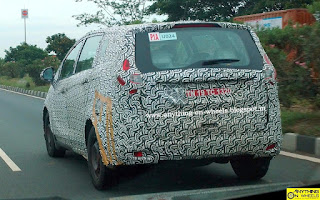Honda City has been ruling the roost in the mid-size segment since the late nineties. While competitors came in every shape and form, none but the Hyundai Verna (in its popular ‘fluidic’ avatar) managed to usurp the Japanese sedan. While the battle for supremacy is back with Japanese protagonists with the fourth-generation City and Maruti-Suzuki’s Ciaz vying for honours, Hyundai is not ready to cede further ground yet. The all-new Verna, launched in India today, is the slingshot Hyundai hopes will bring it back into the hotly-contested battle.
With introductory prices ranging between INR 8.00 to INR 12.24 Lakhs for the petrol variants and INR 9.20 to INR 12.62 Lakhs for the diesel variants, Hyundai has played it smart by positioning the Verna bang in between the Ciaz and the City. Clearly, this is an attempt at pulling in buyers from both of them.
At first glance, the new Verna appears no more than a facelift of the outgoing model, albeit a significant one at that. That's not true. Based on the K2 platform that also underpins the Elantra, this is an all-new generation of the car that made its global debut last year.
Incorporating Hyundai's newest corporate design trait - the 'cascading' grille, Verna's fascia looks more grown up and mature. On either sides are stretched headlamps with inbuilt projectors and LED Daytime Running Lights. The projector fog lamps, a segment first, are placed in separate housings on the bumper. The grille surround, the horizontal slats and the fog lamp surrounds are all dipped in chrome to satiate the never-ending craze for the shiny metal. In profile, the Verna retains the tipped-forward stance as before but the multiple cuts and creases are gone, now replaced by a prominent shoulder line. At the rear, Elantra-esque split taillights with LED elements look brilliant and gives the Verna a sort of 'mini Elantra' demeanor.
As we have seen with newer Hyundai cars, the interiors aren’t what one would term aesthetically pleasing. Having said that, the build quality, fit and finish appear top notch as usual. The dual tone dashboard features a wing-shaped center console that houses a 7.0-inch touchscreen infotainment system in the top variants. Interestingly, the seats are given the dual tone treatment as well with beige and black applied in equal measure. The new Verna is longer and wider than its predecessor, thereby liberating more headroom and legroom for the occupants. Despite that, the Hyundai is no match for the humongous space on offer in the rear seats of the Honda and Suzuki-badged rivals.
As is the norm these days, the new Verna is loaded to the hilt with features. Standard features across the lineup include dual airbags, Anti-lock Braking System (ABS), central locking, ISOFIX mounts, power windows, cooled glove-box, tilt steering and rear center armrest with cup holders. The kit in the top-end SX(O) variant include electric sunroof, side and curtain airbags, ventilated seats, projector headlamps, cornering lamps, leather upholstery, smart hands-free trunk, push button start/stop, Auto Link and rear curtain, a few of which are firsts for the mid-size segment.
Powertrain options in the new Verna are now restricted to the 1.6-liter engines. While the 'Gamma' petrol engine churns out 121 horsepower and 151 Nm of torque, the 'U2' CRDi mill generates 126 horsepower and 260 Nm of torque. Mated to these engines are a 6-speed manual gearbox carried over from the outgoing Verna or a new 6-speed automatic transmission shared with the Creta and the Elantra. The 1.4-liter engines and the dated 4-speed automatic box have been shown the door.
With the new Verna, Hyundai has carefully retained the old Verna's strengths while simultaneously rectifying the car's weaknesses. But, is that enough to pull in customers from the City and the Ciaz that are running away in the sales charts? For sure, an interesting battle is brewing up and we will have to wait and watch for the results.


























